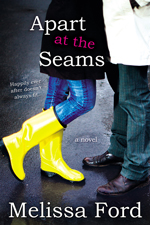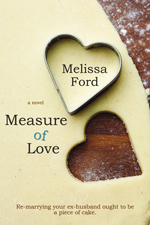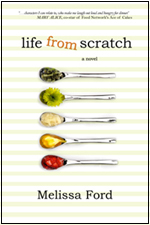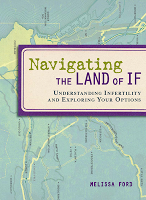The New York Times and Stephanie Saul: Infertility! Twins! Danger!
Getting beyond the fact that I usually start twitching when someone sends me something from the New York Times, all the more violently when the byline comes from Stephanie Saul who insists that it’s a good idea to use the wrong terminology when discussing fertility treatments, I couldn’t help but read the series of articles about multiple births and fertility treatments. Unlike others, I did not bother to click on the accompanying comments because I am familiar enough with the New York Times to know that nothing good can come of reading the opinions of people who see nothing wrong with the fact that their newspaper is wrongly using the term implant in regards to embryos.
You can’t argue with the meat of the articles, the first of which can be boiled down to the thesis that multiples increase the risk of prematurity, and therefore, protocols should be in place to discourage practices that would lead to a higher chance of multiples. A pretty sound idea. The second article covers the topic of selective reduction and how IUIs lead to higher order multiples because there is less control than IVF. Again, no one can dispute that fact. A third roundtable discussion covers again the problem with multiple births.
Of course these articles were of interest to me as a mother of twins who were conceived with the help of fertility treatments. They were delivered seven weeks prematurely when they stopped growing in-utero and there was deeply discordant growth. They spent three weeks in the NICU and have been generally healthy with some lingering problems of prematurity. Obviously, I’m one of the target audiences for these articles and you would think that I would have nodded my head a bit more since they do bring up tangentially ideas that I firmly believe.
But the problem begins with the fact that Saul never convinces me that she wants to hold a frank discussion, working together via journalism to solve the problem of multiple births and prematurity in regards to fertility treatments. Instead, the language used, the stories told, and the facts addressed all point to the fact that Saul never closely examines the solutions, instead choosing to only address the problems–and missing the point entirely in the process.
Instead of focusing on reasons why people would risk the transfer of multiple embryos, practicing sound journalism where she would interview numerous subjects and utilize their words to present the story, Saul jumps to conclusions: “patients are eager for children” and they want “to be successful on the first try.” But rather than state the real reason why women wouldn’t want to undergo more fertility treatments than necessary–money and physical pain–time is given as a factor.
Anyone who has paid out of pocket for a chance to conceive knows that there are two main reasons why people take risks with treatments and they are very closely aligned to the reason why people take risks with any medical treatment–especially one that is tied to quality of life. First and foremost, the exorbitant cost of treatments–mostly uncovered by insurance–goes towards a chance rather than a child. Few have the ability to do treatments until they work. Most need to take risks in order to feasibly pay the high price of family building (and for the love, before you suggest adoption, please first understand the cost of adoption and why it isn’t a solution to infertility but instead a wonderful, separate family building option).
Secondly, anyone who has been on the receiving end of a needle knows that you try to complete as few cycles as possible to conceive both due to the physical discomfort associated with treatments as well as the overall health risks that can come from doing treatments. There are times when the risks of prematurity and multiples balances out the risks of doing multiple treatments for both the woman’s mental and physical health.
Saul reveals her bias early on (as if she hasn’t already done so in the past with her other articles concerning infertility), calling it the “fertility industry,” a term used by others to greater impact because it is backed by ideas rather than used unsupported as a slur. We don’t call it the cancer industry, implying that people are being churned through like cans of creamed corn or automobile parts. We don’t imply that people are being moved through the medical factories mindlessly like just another object if they treat a health issue such as breast cancer. We don’t call it the obstetric industry even though we all know the statistics on unnecessary c-sections. The term is as paternalistic as the practices the terms evokes, as if women and men do not have the mental capacity to think for themselves and be careful health consumers.
One of the real financial problems of infertility and prematurity was barely addressed at all in the articles and it serves as the white elephant in the room: if insurance companies covered the cost of treatments, they would save on the back-end in the cost of NICU stays. You would get more people to accept eSET (elective single embryo transfer) or to cancel IUI cycles when too many follicles are made if they knew that they had another chance financial-wise to cycle again.
This has long been the point made by Resolve, the national infertility organization aimed at providing infertility education, lobbying lawmakers, and extending support to those experiencing infertility. It’s an organization that has been working hard for actual change as America reexamines health care, lobbying lawmakers for support of two bills that would require insurance companies to cover fertility treatments. In other words, it is asking America to put their money where their mouth is–either we value the health of women and children and want them to make sound decisions about family building or we don’t. Either we believe that family building is an important endeavour or we don’t.
It is a bit disturbing that an organization that has been at the forefront of infertility education wasn’t quoted in the article. She refers to the fertility industry, yet never ventures outside of a small circle of “factory owners” to broach those who would receive no financial gain or loss by having changes to treatment protocols.
And for the love, it is a fertility doctor–Robert Stillman–who brings actual sense to this discussion with his participation in the treatment roundtable, giving concrete steps one could take to solve the problem rather than stand in the wings like Stephanie Saul, starting the horror movie music in the background as she writes such fear-inducing lines such as “an exploration of the fertility industry reveals that the success comes with a price.”
She takes extreme examples–a woman with two follicles that split into sextuplets (seriously, Saul, I thought I was going to go into convulsions from your misuse of implant and transfer, but when you stated that the doctor saw “two developing eggs” on the ultrasound screen, I think I literally started foaming at the mouth)–a situation that the doctor had never seen in 30 years of practice–and hold it up as your IUI example. It would be like examining IVF solely through the lens of Nadya Suleman–which…er…I forgot…you already did that a few months ago.
Saul’s sole mention of the solution is buried towards the bottom of the first article: create programs that make it financially feasible to perform single embryo transfers. And instead of exploring that option in the second article, Saul chooses to wax on about the dangers of IUI, instead pointing out how much more controlled IVF is (and it is, but that never was made clear in Saul’s first article) in terms of limiting multiples. She gives solutions short-shrift. Which makes me question the point of these articles. Is it to raise questions that require answers? Push society to examine where we place family building on our emotional continuum? Seek solutions to what she deems a pressing enough problem to warrant multiple articles?
At the end of the day, it comes down to money and overall health–physically and emotionally. Make treatments financially feasible and people would make different decisions. Create programs where embryo freezing is free for those who elect to transfer one embryo and you’d have more people take advantage of the program. Make future transfers free as well and you’d have incentive to lean towards eSET over multiple embryos, especially when drug intake in future cycles can be curbed.
When I taught eighth grade and my students would negate their own thesis within the paper, I would circle the sloppy writing and point out the mistake and send back the assignment to be rewritten. And it sort of sucks that I’m not Stephanie Saul’s teacher because I would have given her a second chance to make a strong case. And as is, the New York Times again is the proprietor of what essentially amounts to verbal Wonder Bread–no substance, no mental nutrition, and mostly air taking up valuable space that could have been filled with useful argument.
Cross-posted at BlogHer













62 comments
Excellently stated. Can you submit this to the NYS editorial page?
Well said. I so hope Stephanie Saul sees this post!
Awesome, Mel! I hate it when people with no knowledge of a subject decide to write on and on about it. I’ve never personally read this woman’s articles, but I don’t think I will. It will probably just prove to make me even angrier. Thanks for this!
Thanks for writing a thoughtful view of these articles. I’ve always considered Ms. Saul’s goal in writing as one of generating hysteria, much like throwing kerosene on a fire, rather than calling 911. Her motives have struck me as that of a reporter looking to make a name for herself, writing what she perceives to be hard-nosed reporting, by being overly dramatic and writing in sound-bites. In my opinion she just comes off as a junior high school newspaper reporter that has a very limited perspective of the world. I’d love to know her backstory, and why she chooses or is assigned to write on this topic.
Go, Mel!
Unfortuante as it is, you can understand that The Average Joe lacks incentive to sift through the subtle, complex, highly technical details involved here. But how do you pardon a “professional” posing as someone who is shedding light for being so undisciplined? For doing the opposite of illumination and then patting the dirt over the truth they’ve just helped to bury alive?
Very disappointing. Shame on you, NYT.
Great post! I hope you submit this as a letter to the editor to the New York Times. Saul’s article was terribly written and poorly though out.
Very insightful post!!! Much better than the drivel written by Saul. Good job!
Fantastic post! You said it better than I ever could have dreamed of! Thank you thank you thank you!
I vote for going ahead, grading the paper, and sending it to her! Your post certainly gets an A in my book. 🙂
Amen and amen!
Fabulous.
I’m also peeved that so many of the doctors she interviews seems to be so quick to throw their patients under a bus. Of course all IVF patients are the driving force behind multiple embryo transfers! They’re just salivating over a matched set and impatient (because if they were only patient and relaxed they’d get preggo stat.)
Journalists like her are not interested in patients like myself (and nearly every other person that I knew personally who underwent IVF) who weren’t all that thrilled at the thought of a high-risk pregnancy to round out an infertility journey. Nor do they point out that the clinics have much more to gain (like millions of dollars to gain) by making us pregnant come hell or high-water. There are many patients who say, “And you want to transfer HOW many?” But when your bladder is painfully full, you’re going to lose the argument just so you can pee.
I would submit this to the op-ed page, Mel. For realz.
Please tell me that you emailed this to Stephanie Saul as well!!
GREAT post. I saw those articles last night and couldn’t stomach them either.
Here – here! I completely concur with those who have said this needs to be submitted and gotten out there to a larger audience. I’m tired of trying to get much of what you said across to people (family, friends!) whose view of the ARTS is so skewed by articles like this NYT one and others. They read it in the paper or saw it on the news so it must be so. Hulloooo?? How about asking someone who has been there, done that lived it? Bravo Mel!
Well written! I can’t stand that woman.
Thanks, lollipop-great job! Please,please,please submit this to The NYT editorial page. Conquering infertility and IVF are difficult enough without people making ignorant comments. I despise The NYT and Saul’s article just reinforces that for me.
Hear, hear! Thank you SO MUCH for including the idea of not just the financial toll, but the physical/mental toll that cycling can have on a person. I have insurance, even fairly generous insurance, and I still chose to transfer two superstar embryos, and that decision was largely based on my feelings regarding EVER going through the progesterone-in-oil part of the process.
Until IVF is not only financially within means, but can come with a more user-friendly and effective form of luteal phase support (and can come with free and frequent counseling for spouses and a safe form of xanax that can be taken for the panicky ones among us and a new kind of ovary stimulation that neither hurts nor makes you insane and a down-regulator that does not cause weight gain…), I personally don’t ever want to do it again. It has been far harder on me than I thought it would, especially these last couple of weeks. I’ll take the risk of twins, the lifetime of double-costs, and potential for a troubled pregnancy and possible NICU stay over the trauma of a second IVF. Once has been far more than enough for me.
That Ms. Saul ignores that glaringly large factor is just further evidence that she is extrordinarily out of touch with the realities of assisted reproduction. The latest series has thoroughly convinced me that I come to a similar conclusion as you, that there is no real desire for true dialogue or understanding or solutions, just a chance to stir the pot by pulling back the curtain on us circus freaks at the RE’s clinic.
Excellent. Thank you.
Mel – Thank you so much. Your insight could teach a lot of people outside the world of IF. PLEASE send to the NYT Op-Ed.
I am going to rethink my “anonymous” blog. If I can’t be open about my IF journey, how can I expect others to understand the realities of infertility?
I ..um, well I guess I’m back from vacation and as sick to my stomach as when I was pregnant. Your words were insightful and thought- provoking. I wish I could say the same about Saul. YUCK.
Thanks for this Mel. I HATE when people who write about infertility only choose to write about the negative, never offering solutions or suggestions. Of course, these are probably women who have never ever been in our shoes before.
Well put!
Aaaargh…send the journo to me….And I will bore her with my sob story of having zero zero zero insurance cover for anything that sniffs of IF treatment.
My lap claim was rejected, even when I was the proud owner of a cashless hospitalization card.
As always, a fantastically written response Mel!
Mel I responded to your post on BlogHer but suffice it to say, as a mom of twins via surrogacy/medicated IUIs… I was ripping mad at the article. It painted all of us as yearning for as many children as we could handle, ideally, twins, completing our families in one fell swoop and unethically so.
UGH. That is so not the reality. I love my sons, and while they were not in a NICU and they were born early… we would never have done any unethical protocols to increase the odds of multiples. After many failed cycles of IUIs we finally had to use fertility meds. The lowest dose was used. There is nothing unethical about that.
Your response rocked.
Oh my. Excat, precise and so clear.
Well said.
I am lucky to live in a nation where eSET is the norm because the cost is lower, although given it costs the same to Tx 2 as one, people still do.
If SET is the cheapest option, people will do it. Period.
g
Great post! Thank you for putting into sane words what I cannot through the haze of red that blinds me when it comes to these articles.
I’m compelled to comment and send an email to any journalist who uses the word “implant”. I’ve also sent long letters to “journalists” who wrote about Kate Gosselin and her IVF treatment (because, you know, any infertility treatment must be IVF). Only once did I get a note from the author regarding a correction.
Gaah.
My IVF was covered by insurance. Nonetheless, I chose to transfer two embryos. Which resulted in a twin pregnancy. Which resulted in preeclampsia.* Which resulted in the loss of both twins.
And, yes, I know that’s only one anecdote and there are plenty of stories out there with happy (or at least happier) endings. But I feel immensely guilty about my decision to transfer two.
*The risk of preeclampsia is much higher with multiples.
Mel, this is a fantastic post. I agree with the comment above that you should send it in to the NY Op-Ed so that at least some of the people who read this article can read a reasoned response.
I am in this exact situation- in the tww after a FET where we transferred two embryos (both of good quality), risking twins because we can’t afford (financially or emotionally) to keep doing this over and over again.
Ontario’s expert panel on infertility and adoption recently published its list of recommendations to make family building more accessible. Top of the list for infertility was funding IVF with single embryo transfers. They argued the province would save money in the long run by cutting down the number of multiple births.
I’m not holding my breath the government is going to listen.
And in the meantime, I am holding my breath and hoping that I can be lucky enough to get pregnant, and yet not with twins, as the risks really frighten me. Which makes me feel like a total ass for even transferring two in the first place. But I didn’t feel like we had much of a choice.
Thanks again for this post.
T.
Oh, please tell me you sent this to the editor of the NYT. I don’t even want to read the article. I am so sick of people assuming IVF like getting a flu shot. I guess if it had worked like a charm for me the first time, I might be among those who think it’s more reliable than having sex. It was just a funny story until I got what was my first of 4 BFNs. I don’t know anyone who ever WANTED to go the IVF/IUI route for shits and gigles. Sigh.
And you know what? For people like me, who have had multiple FAILED IVF transfers, it’s not all about wanting it to work on the first time. It’s wanting it WORK PERIOD.
With this failed transfer we have transferred a total of 14 embryos, 1 of which gave us our son. From 4 cycles. So. Our personal success rate is about 25% per transfer, WITH 2-3 embryos. Our embryos average a 7% success rate.
Yep. I’m willing to risk multiple embryo transfer and when it boils down to it it has nothing to do with the money, not really. It’d be nice not to pay a fortune for my kids, but I’m WILLING to do it. I just want it to WORK.
Knowing how Times articles about anything remotely having to do with IF boils my blood, I instead chose *not* to read the articles and just wait patiently for your commentary about them.
So glad that I did.
Beautifully stated Mel. You are a clear and concise voice for the IF community. Thank you!
I don’t know what I can say that everyone else hasn’t already said, but “Bravo!”
Mel, I love you~! This is so on-point, as always.
When I read Saul’s article (and tortured myself with the subsequent commenters) I thought of the EXACT same thing – why didn’t she interview RESOLVE? Asking ” America to put their money where their mouth is–either we value the health of women and children and want them to make sound decisions about family building or we don’t” – brilliant and aptly stated.
Take THAT Ms.Saul!
Help be a part of the solution rather than harping on the problem!!!
I heard about at least part of this series of articles from Tubeless in Seattle: http://tubelessinseattle.blogspot.com/2009/10/small-rant-about-nyt-article-on-twins.html
…which brought about a very interesting discussion, worth the read for sure!
As someone currently preggo with twins after a two embryo transfer IVF, wellI guess this article is really about me. We chose to skip injects with IUI partly due to the risk of high order multiples, and partly do to my perceived ‘very poor egg quality’. We could afford a one-shot attempt at IVF, so OF COURSE we transferred two back in, our RE wasn’t even sure that ONE would take. So, we were awestruck with the twin pregnancy. I’m sad that it is going to be such a high risk pregnancy, but am so thrilled to be given this opportunity for more children. So many do not get this chance. If insurance would’ve paid…I think I probably WOULD’VE gone for an SET…but who know. IVF stinks. I never wish to do it again.
Very good response, Mel. I hope the writer of the original piece sees this.
Can I just say, I LOVE YOU, MEL!!!!!
thank you so much for addressing these articles. It all felt wrong to me when I read them but I could not really articulate why.
Here am I considering what feels like my one shot at IVF with donor eggs and praying that if we transfer two blastocysts we will get one baby, maybe two. It would be hard to deal with twins but we would do it to make our family. Otherwise two years later here I come back to my doc (hoping I still have insurance) and doing a FET at the age of 44.
I hate it when the so called moral majority has a go at a subject they know nothing about and scare the bejesus out of us all. Hell that article scared ME! and I feel like I know at least a thing or two.
PS I wonder if when they are writing about cancer or some other science they “dumb down” the terminology for their oh so stupid readers?!! GRRRRR… Ooops I got on my high horse for a bit there.
Anyway, you seriously ROCK!
thanks again!
🙂
PPS – you absolutely need to Kirtsy this post! It’s BRILLIANT!!!
Need I say more?!!!:)
Mel, you rock.
This post hits the hard facts and gets right to the heart of the issue. Kudos.
Now if only Stephanie Sual would take some notes… I mean, in journalism you have a responsibility to your audience. You should do your research, talk to experts, and not rile people up and provoke hate amongst factions. It’s one thing to draw attention to an issue, but another to drag people down and essentially say they are in a hurry and not thinking about what they’re doing. Versus, you know, the actual facts… like insurance not covering it, trying for years already, and everything you’ve hit on.
Great post Mel.
Firstly, I HATE it when ‘implant’ is used over ‘transfer’ & what a lame excuse Ms Saul used.
Quote:-We had an internal discussion about whether to use the term “implant” or “transfer.” We decided to use the word “implant” because, to the average reader who is not well-schooled in the terminology surrounding in-vitro fertilization, it is an accurate description of what happens. The average person does not really understand what “transfer” means in this context.
We listen lady (and I use that term loosely), if you in the media actually used the correct terminology, then maybe the average reader would begin to understand what really did actually happen in IVF.
As for the eDET & wanting children yesterday… I only did eDET after many failed cycles & would not recommend others do a eDET until they have had failed cycles. I also didn’t expect that the transfer would work (as pessimistic as I was after 7 previous transfers, I was planning the next stim cycle).
**PG/Children Mentioned**
My boys were born 9w3d early & spent 7wks in NICU/SCN due to their prematurity. Today at 6mths AA/4mths CA, I am so lucky that they have no know issues.
Would I do it over again (eDET)? If I knew of the complications I was going to face, then no. Would I recommend others do a eDET? As I said above, only after numerous failed cycles & I’d make sure they knew of what complications may or may not happen.
Another vote for sending this to the NYT. Although I’m starting to wonder whether we will ever be able to make people listen & understand our point of view.
I was going to blog about this but you & Julie have done such a fabulous job I can’t think of anything else to add. ; )
Amen sista! Great post! I hope NYT AND Saul get’s to see your post!
GIRL… if youi don’t send this to NYT you are NUTS!! AWESOME JOB. VERY EDUCATED as us Infertiles are. Yes, it needed to be covered by insurance YEARS ago when Infertility was deemed an illness. I think Fertiles think we are crazy for wanting children. Do they not remember what it was like to want a child?? I guess not. Our grief is ignored and that just makes it worse. Fertility treatments are around to help people become families. Before that people adopted more(as there was less access to abortion and it didn’t cost an arm and a leg) and suffered greatly.
Yes. Yes. Yes. I could not agree with you more!
Yes – PLEASE submit this to the NYT! DO IT!
I am with everyone who suggests you send this to the NY times as either an opinion essay or a letter to the editor.
Amen.